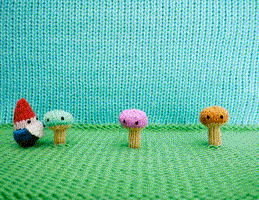Endless Exploration EX2 (May 2024) A New Matte PLA
In our first Endless Exploration (EX1), we explored strength and surface appearance for a variety of Protopasta PLAs. We shared a new High Flow PLA (HFPLA) to maximize volume rate while maintaining strength and surface appearance over a wide process range. For our second exploration (EX2), we searched for a new way to make a matte finish. Introducing cMatte PLA...

Photo: McGybeer (on Tribes) Cali Dragons in cMatte
Why cMatte? Matte Fiber creates a beautiful, low gloss texture great for hiding layers. Matte Fiber is a wood composite for filament that is stiff and moisture absorbing. While a visually stunning result is possible, these attributes make Matte Fiber more difficult to use. We formulated cMatte to be less brittle and absorb less moisture, and thus easier to use.
The “c” in cMatte is for Calcium Carbonate (CaCO3) and while used as an ingredient in cMatte and cement, cMatte is not hard like cement. Cement has a Mohs hardness of 5-7, but CaCO3 has a hardness of about 3, similar to brass. After consuming many KGs to print large vases (below), cMatte did not wear out a standard brass nozzle on our Prusa MK3!

Photo: Vase by Hendricks Design (on Thangs) in cMatte
As we learned in EX1, when printing at a high volume rate and low temperature, HFPLA, HTPLA, and PLA can all produce a somewhat matte finish. cMatte PLA, however, produces a lower gloss finish in the same conditions as our other PLAs. Below is a comparison at the same temperature and rate (same gcode).

Photo: Cali Dragons in cMatte PLA (left) and HFPLA (right)
But how do we choose a temperature and volume rate for 3D printing? Like in EX1, we made prints with increasing volume rate (increasing speed for a constant width, height, and temperature). Below is 2-24 mm^3/s in 2 mm^3/s increments from bottom to top on a Bambu P1S at 200 C. Note the difference in gloss. At 200 C, both materials are limited to about 14 mm^3/s maximum for a stable result on the P1S with a stock 0.4 mm nozzle.

Photo: cMatte (left) and HFPLA (right) from 2-24 mm^/s at 200 C
Increasing the temperature does increase the the maximum possible volume rate, but it also increases the gloss at lower rates. You can see that effect below with cMatte at 200 C (left) and 240 C (right).

Photo: cMatte from 2-24 mm^3/s at 200 C (left) and 240 C (right)
You can see that even at 240 C, cMatte is less glossy at low rates compared to HFPLA. cMatte tops out at about 22 mm^3/s on the Bambu P1S with a stock 0.4 mm nozzle at 240 C. At standard Bambu temps of 220 C for PLA, you can expect an upper limit of about 18 mm^3/s. I find it useful to see the relationship between temperature and rate when choosing print settings.
Make your own experience with the above parts by downloading the 3MF for 2-12 mm^3/s and 14-24 mm^3/s. While this test print doesn't quantify layer adhesion (which is less with cMatte compared to HFPLA), visual indicators of surface gloss and quality can tell you a lot about your process for a given hardware, material, and settings. I can't recommend enough making a small investment in time and material to print with more intentional, known conditions.
Using what I learned from the above parts at 220 C, I printed the below planter with a maximum of 18 mm^3/s on one of our Bambu P1S machines. Using 0.48 mm extrusion width and 0.24 mm layer height, I attained the beautiful cement-like result seen below. Weighing about 120 g, print time was about 3 hours.

Photo: Planter design by HpInvent (on Maker World)
Or how about 265 g of Parthenon goodness in about 7 hrs? Hades yeah!

Photo: Parthenon Ruins by MiniWorld3D (on Printables) in cMatte
You can limit and visually verify the volume rate in your slicer. For the above resolution, temperature, hardware, and material, I was able to print at a rate of about 40 g/hr. Even at 0.24 mm height, the layers almost disappear!
How about 0.16 mm layers like below? Stunning, right? It even feels and sounds like stone with near 100% infill!!!

Photo: Bear model by Nikita Burula in cMatte
In summary, cMatte is a beautiful filament good for stunning results! Special thanks to Endless Exploration subscribers for supporting this development!!!
What will you print? Show us on social (links below).
Not an Endless Exploration Subscriber? Subscribe for the next delivery and/or purchase cMatte in black, white, and gray individually in June.
Take care and enjoy the pasta,
Alex and the Protopasta Team






